November 20, 2017
The University of Montana Western recently welcomed artist in residence, Miriam Di Fiore, to share her expertise and unique technique for rendering imagery in glass during the Glass Studio Open House, co-hosted by Montana Western’s Alumni and Friends.
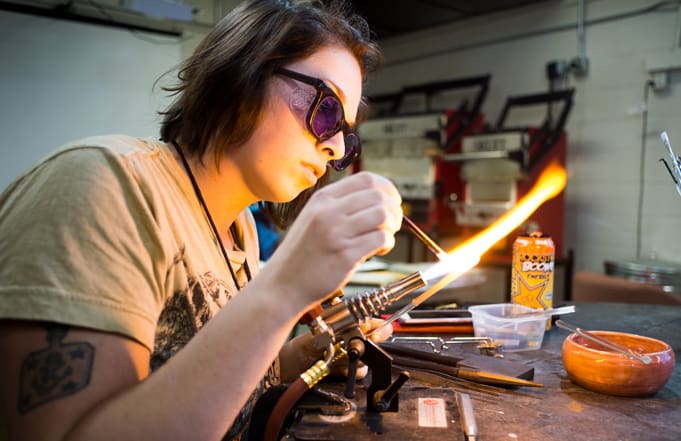
Associate Professor Michael Hengler provided an introduction to the studio’s facilities, located in the Emerick Art Studio, which are used by students during their coursework in glass working including hot shop, torch working, fusing, casting and cold working.
Students in glass courses learn to work with glass, both towards technical mastery and as a material adept at articulating conceptually-driven artwork. Montana Western is the only four-year university in the nation to offer a scientific glass blowing degree.
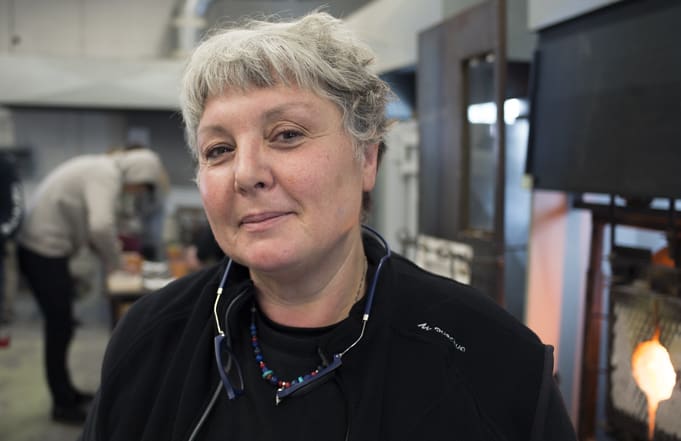
Originally from Argentina and currently living in Italy, Miriam Di Fiore has become a master of her craft, having traveled the world teaching classes and exhibiting in galleries. Her art can be found in several museums and permanent collections and features her unique glass layering technique to create a three-dimensional effect in the scenes she creates, often representing nature and forests and the personal connections, memories and emotions she associates with them.
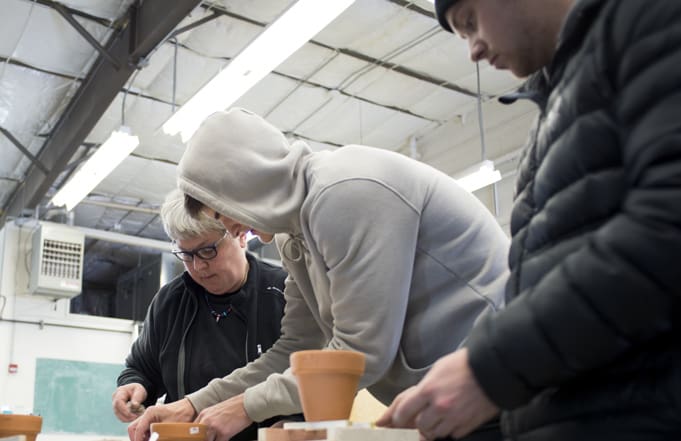
Montana Western students had the unique opportunity to work directly with the artist in residence as she shared her expertise during the week of the Open House.
“With glass, I am able to express my thoughts on joy, pain, and hope as part of the cycle of life,” Di Fiore said.
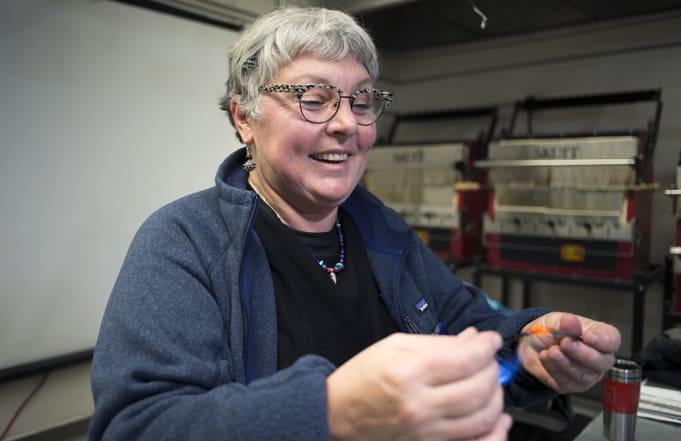
Her method, described by her contemporaries as the “Di Fiore technique,” doesn’t involve glass blowing, but rather a repeated layering of thin layers of glass that are fused together and fired multiple times in a kiln.
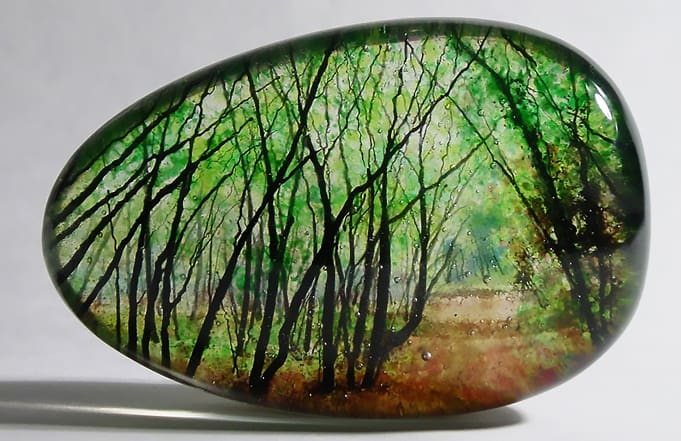
The result is a thick piece of glass that makes the viewer feel as though the scene encapsulated is three dimensional, almost like looking out of a window.
She often pairs her glass pieces with found objects, especially those made of wood including musical instruments and drawers.
“In Italy, there is a saying: what is the dream in your drawer? This refers to one’s hopes and dreams and what you would most like to accomplish in your life,” she said.
Building on this concept, Di Fiore created several pieces that involve her glass encased in drawers from pieces of furniture. Some of them even include mirrored linings, to create the feeling of a never-ending landscape.
The reincorporation of the wood pieces is used in a way to give discarded objects, once part of a living thing, a chance at a second life.
“In this way, the landscape connects with the object itself,” she said.
One of her series focuses on incorporating pieces of wooden musical instruments that were no longer functioning. She rebuilt the rest of the instruments in glass and included beautiful imagery of the forest. In this way, the “Voices of the Trees” series gave a second life to the fragments but also brought the connection to the forest back full circle.
“You must have courage to see the details,” she said.
For more information about the Montana Western Glass Studio and Glass degree programs, please contact Associate Professor Michael Hengler via email at [email protected] or call 406-683-7344.